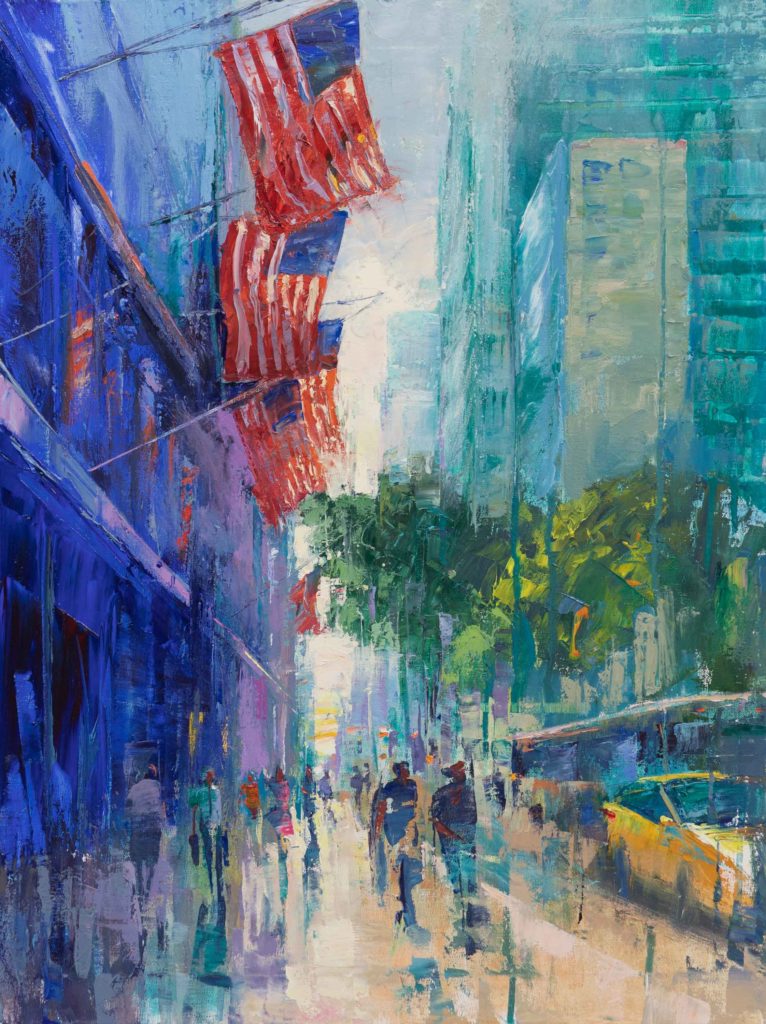Find Antique and Vintage Oil Paintings for Sale Online
Find Antique and Vintage Oil Paintings for Sale Online
Blog Article
Checking out Everything About Oil Paintings: An Overview to Understanding Their Elegance and Value
Oil paints have actually astounded audiences for centuries, providing a look right into the imaginative mastery of different ages. Their abundant history is intertwined with innovative strategies and extensive psychological expression. Understanding the materials and approaches behind these art work can boost admiration. In addition, the market for oil paintings presents possibilities for financiers and collectors alike. As one explores this fascinating world, the question emerges: what makes an oil paint truly valuable?
The History of Oil Painting: A Trip Through Time
Oil painting has roots that date back to ancient times, it really grew throughout the Renaissance, when musicians discovered its convenience and abundant color potential. Early instances can be mapped to the 7th century, with methods developing notably across societies. The tool became famous in Northern Europe in the 15th century, specifically via the works of artists like Jan van Eyck, who originated its usage for thorough realism and vibrant colors. This duration marked a separation from tempera paints, enabling for better depth and texture. As oil painting spread, it affected plenty of artists, resulting in work of arts by distinguished numbers such as Leonardo da Vinci and Rembrandt. The medium's tradition continues, forming the art globe well right into modern-day times.
Comprehending Oil Paints: Materials and Techniques
As artists discover the globe of oil paints, they experience a diverse selection of materials and strategies that specify this tool. The key parts of oil paint consist of pigments, which give color, and drying out oils, such as linseed, that bind the pigments and help with application. Numerous additives can change the paint's structure and drying out time, enhancing versatility. Techniques like glazing, where clear layers are accumulated, and impasto, which entails using thick paint, permit various visual effects. In addition, making use of brushes, combination blades, and also fingers can create unique appearances and surfaces. Comprehending these techniques and materials makes it possible for musicians to fully express their creative thinking and achieve the desired effect in their artwork.
The Function of Shade in Oil Paints
Shade plays a crucial role in oil paintings, influencing both visual allure and psychological resonance. Understanding shade concept fundamentals, including the connections between colors, can improve a musician's ability to communicate state of mind and ambience. In addition, understanding shade blending strategies enables greater deepness and richness in a paint's palette.

Shade Theory Essential
Comprehending color theory is important for musicians collaborating with oil paints, as it forms the foundation for developing unified and visually interesting make-ups. Color concept includes the research study of just how colors communicate, the color wheel, and the connections in between key, second, and tertiary colors. Musicians use corresponding shades to boost contrasts and create prime focus, while similar colors advertise unity and cohesiveness within a piece. Additionally, the concepts of cozy and cool colors influence the understanding of depth and room in a paint. Comprehending these concepts allows artists to manipulate color properly, leading the audience's eye and communicating their intended message. Proficiency of color theory ultimately enriches an artist's capability to communicate emotions and concepts via their work.
Psychological Effect of Shade
The psychological effect of color in oil paints plays an important role in exactly how viewers regard and link with art work. Shades stimulate specific sensations and moods, affecting the customer's emotion. For example, warm tones like reds and oranges can produce a feeling of warmth and power, while cool tones such as blues and environment-friendlies typically evoke calmness or self-questioning. Artists strategically choose shade schemes to improve narrative components, assisting the audience's psychological trip. The saturation and comparison of colors better intensify these effects, drawing interest and creating emphasis. Ultimately, the interaction of shades in oil paints not just improves their visual charm but additionally acts as a powerful tool for emotional expression, improving the visitor's experience and analysis.
Shade Mixing Techniques
While several elements of oil painting contribute to the total composition, understanding color blending strategies is necessary for attaining preferred impacts and depth. Color blending can be approached with various approaches, including the subtractive and additive processes. Additive mixing entails incorporating colors of light, while subtractive mixing relies upon pigments, where colors blend to produce brand-new shades. Artists typically utilize a limited palette to produce harmonious works, understanding the relationships in between key, additional, and tertiary colors. Techniques such as glazing and scumbling additionally enhance deepness and luminance. By skillfully blending colors, a musician can evoke feelings, produce prime focus, and achieve a feeling of realism, inevitably boosting the painting's emotional and visual influence.
Famous Oil Painters and Their Iconic Functions

Renowned for their proficiency of color and method, oil painters have developed a few of read more the most celebrated artworks in history. Renowned artists like Vincent van Gogh captivated target markets with his stirring brushwork in "Starry Night," while Claude Monet's "Impact, Sunup" laid the foundation for Impressionism. Leonardo da Vinci's "Mona Lisa" remains a long-lasting sign of artistic brilliant, showcasing his skill in catching human expression. Meanwhile, Rembrandt's "The Evening Watch" highlights his innovative use light and darkness. Other remarkable numbers consist of Pablo Picasso, who changed contemporary art with his bold trial and error in works like "Les Demoiselles d'Avignon," and Georgia O'Keeffe, whose vivid depictions of flowers and landscapes aided specify American innovation. Each musician's distinct style contributed substantially to the oil painting landscape.
Exactly how to Assess the High Quality of an Oil Paint
Evaluating the top quality of an oil paint includes a cautious analysis of craftsmanship methods, as well as an analysis of shade and make-up. Observing brushwork, layering, and the application of paint can reveal the artist's skill level. Additionally, the interaction of shades and the overall plan of components contribute significantly to the paint's aesthetic worth.
Evaluating Workmanship Strategies
A meticulous assessment of workmanship methods is important for establishing the quality of an oil paint. Critics should first analyze the application of paint; thick, distinctive brushstrokes might suggest a competent hand, while excessively uniform applications could indicate an absence of depth. oil paintings for sale. The layering method is likewise essential; the existence of lusters and varied density can enhance luminosity and complexity. Furthermore, the top quality of the products made use of, such as the canvas and pigments, plays a considerable role in resilience and general visual. Focus to information in elements like edges and shifts between colors mirrors the musician's commitment to their craft. Eventually, these strategies add to the paint's psychological effect and market price, acting as signs of the musician's skill and intent
Analyzing Shade and Structure
While reviewing the top quality of an oil paint, one must concentrate on the interplay of color and structure, as these elements are fundamental to the artwork's general impact. Shade selections can stimulate emotions and develop mood; therefore, the musician's scheme must be checked out for consistency and contrast. A well-balanced make-up directs the viewer's eye and produces a sense of unity. Musicians commonly use strategies like the policy of thirds or leading lines to improve aesthetic interest. In addition, using light and shadow can add deepness, boosting the three-dimensionality of the painting. Ultimately, an effective oil painting marries color and structure, engaging the viewer and inviting a deeper recognition of the musician's vision and strategy.
Caring for and Preserving Oil Paintings
Proper care and preservation of oil paints is essential for maintaining their honesty and long life. To protect these art work, it is essential to present them far from straight sunshine, which can trigger fading and discoloration. Keeping a stable atmosphere with controlled temperature and humidity more aids in avoiding damages. Cleansing ought to be done carefully making use of a soft, dry fabric, preventing any type of harsh chemicals that might harm the paint or varnish. Normal assessments for indicators of damage, such as flaking or fracturing, are suggested. When storing or transporting oil paints, appropriate cushioning and framework are necessary to avoid physical harm. Inevitably, attentive treatment adds to the aesthetic allure and worth of oil paintings over time.
The Marketplace for Oil Paintings: Collecting and Spending
Recognizing the marketplace characteristics for oil paintings is vital for collection agencies and financiers alike. The value of these artworks is influenced by different variables, consisting of the artist's reputation, historical value, and current trends. Collection agencies usually look for items that resonate directly while taking into consideration prospective appreciation in worth. Public auctions and galleries serve as key places for purchasing and selling, with costs varying based on need and rarity. Buying oil paintings needs research study into the market, in addition to an understanding of authenticity and provenance. Additionally, emerging musicians may provide chances for considerable returns, while developed names can regulate high prices. In general, a tactical approach to collecting can generate both visual satisfaction and economic incentives.

Frequently Asked Inquiries
What Are the Environmental Impacts of Oil Paint Products?
The environmental impacts of oil painting products consist of the launch of volatile organic substances (VOCs), dangerous waste generation, and resource extraction for pigments. These elements add to pollution and environmental deterioration, increasing issues amongst environmentally mindful artists and consumers.
Exactly How Do Various Canvases Affect Oil Paint Outcomes?
Various canvases influence oil painting results considerably. Surface, absorbency, and appearance top quality can change paint application, drying out times, and color vibrancy. Artists frequently pick particular canvases to attain preferred impacts and improve their artistic expression.
Can Oil Paintings Be Brought Back if Damaged?
If damaged, Oil paints can undoubtedly be recovered. Expert conservators use different strategies to repair splits, clean surfaces, and address discoloration, guaranteeing that the artwork keeps its original appeal and worth for future generations.
What Are the Indicators of an Initial Oil Painting?
The indicators of an initial oil paint consist of noticeable brush strokes, structure variations, and an unequal canvas weave (oil paintings for sale). Furthermore, authenticity might be validated via provenance, trademarks, and the existence of a varnish layer distinct to oil tools
How Has Innovation Influenced Modern Oil Paint Techniques?
Technology has considerably affected modern-day oil painting strategies by presenting digital tools for planning, enhanced products for appearance and longevity, and on the internet systems for sharing and selling art, thereby expanding musicians' imaginative possibilities and audience reach. Oil paint has roots that date back to old times, it absolutely flourished throughout the Renaissance, when musicians found its versatility and abundant shade possibility. The emotional impact of shade in oil paintings plays a critical duty in just how customers connect and view with artwork. While many elements of oil paint add to the total composition, mastering color blending techniques is important for achieving preferred effects and depth. Assessing the top quality of an oil painting involves a cautious assessment of craftsmanship techniques, as well as an analysis of color and structure. While evaluating the high quality of an oil paint, one have to focus on the interplay of color and make-up, as these components are basic to the art work's total influence.
Report this page